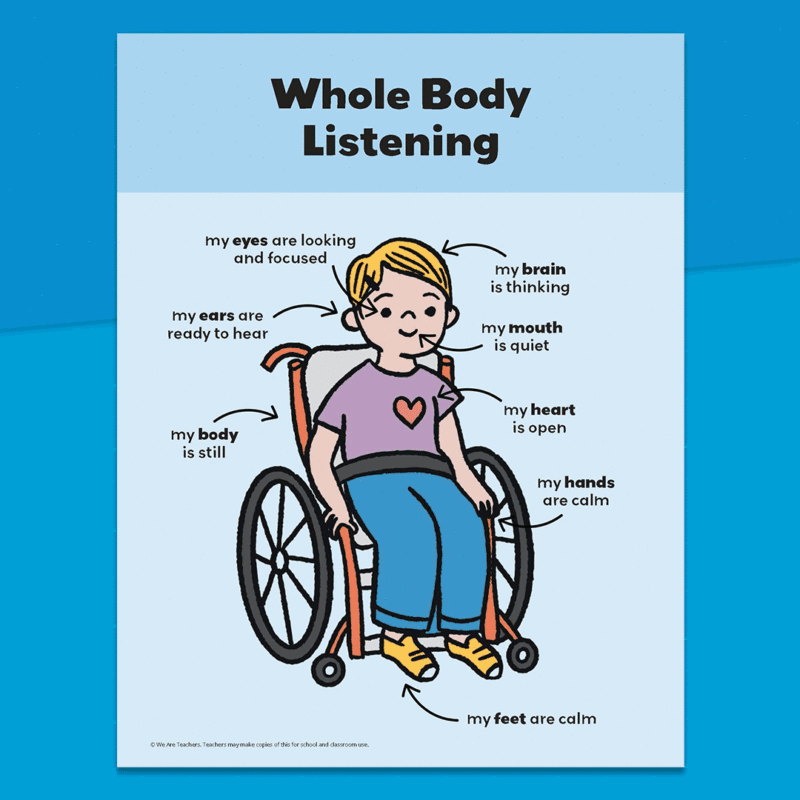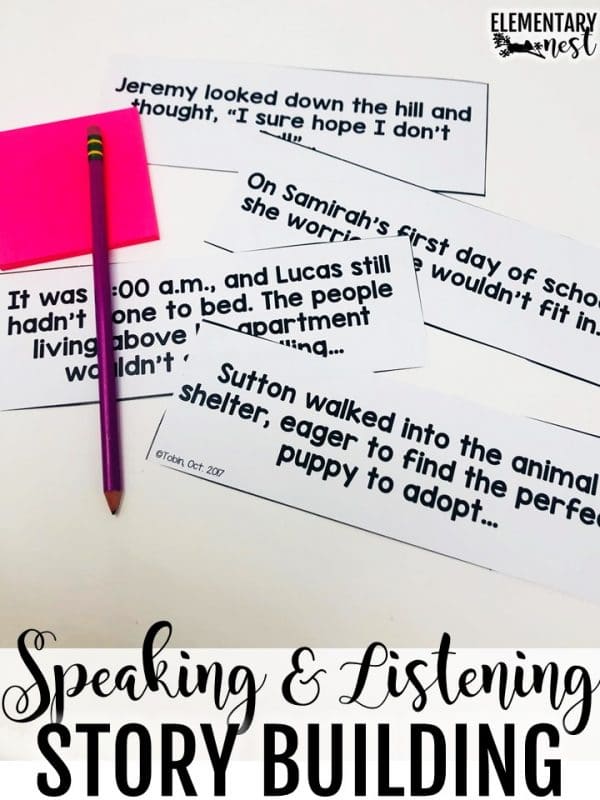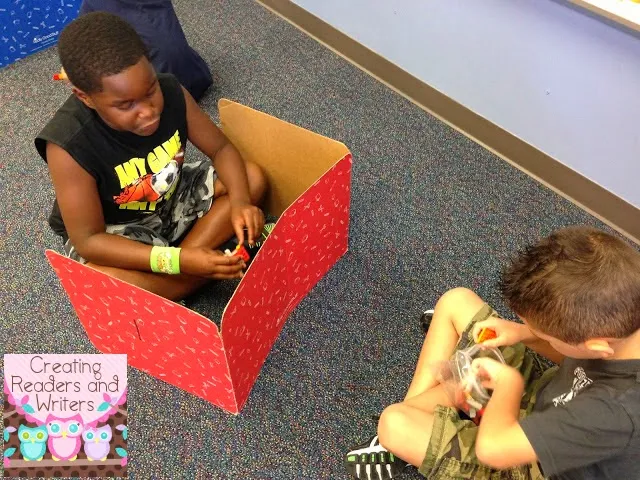One of the most important jobs we have as teachers is to make sure students listen—really listen—to what we are saying and teaching them. Anyone who’s taught in a classroom knows this is definitely easier said than done. Ensuring you have your students’ attention is a big component of classroom management. And let’s face it, this is one of the most demanding parts of the job. In addition to being important for learning, listening is also a vital part of social communication. But it’s not just something we do with our ears. Whole body listening is a tool we can use to help make listening more accessible, concrete, and multi-faceted. Here we’ll break down what it is, why it’s helpful for students, and some tips and suggestions for inclusively incorporating it into your classroom.
Jump to:
Plus, be sure to fill out the form on this page and grab your free set of printable whole body listening posters plus an inclusive worksheet to help kids identify what whole body listening looks like for them.

What is whole body listening?
Good listeners do many things with their bodies and minds besides just listening with their ears. The concept of whole body listening includes many intentional steps we can follow to encourage active listening and understanding, while also promoting effective social connection. For example, the brain thinks about what we’re hearing, and whenever possible our eyes look at who’s talking, our mouths stay quiet, our body faces the speaker, and we keep our hands and feet to ourselves.
Susanne Poulette Truesdale, a speech pathologist, first created the concept in 1990 to make the idea of listening more concrete. Since then, it’s expanded to include the heart as it relates to empathy and understanding other perspectives.
What are the benefits of whole body listening?
Listening is a huge skill that will serve students throughout their entire lives. Developing listening skills is crucial for children as it forms the foundation for comprehending content, context, social cues, effective communication, and building relationships with others. But it’s not as straightforward as we might think. As teachers and adults, we have defined what good listening should look like. Of course, students want to do the right thing, but they might not know how to pay attention in the way we expect them to. Additionally, for kids with attention or sensory regulation challenges, it can be even harder.
Since active listening is not always intuitive and all students come to us with different capabilities, we need to explicitly teach kids how to listen. Here’s where whole body listening comes in. Breaking down the steps into manageable pieces helps give students the tools they need to effectively listen.
Social skills also play a significant role in effective listening because listening looks different in different contexts. For example, sitting down and listening to a story looks different than listening on the playground or when you are talking to someone.
Whole body listening can also help us block out distractions that get in the way of our learning. Avoiding distractions and advocating for our needs can be tricky for all of us, but we can offer concrete suggestions and give students many opportunities to practice as part of our instruction.
Another benefit to promoting active listening is increasing students’ awareness and self-assurance. According to Waterford.org, helping kids improve their listening skills also leads to greater self-belief and confidence.
Is whole body listening right for everyone?
To meet every learner where they are, we have to be mindful of each student’s unique needs and use a variety of approaches to accomplish the task. Basically, like most things we use in our classrooms, it’s not a one-size-fits-all approach. Still, we can use the framework as an effective method to help our students attend better.
Students with ADHD, autism, and sensory processing challenges may struggle to perform whole body listening in the same way other students do. Just like in every aspect of their learning, we make accommodations for students based on what we know they need to be successful.
Our free printable whole body listening posters and worksheets suggest many ways we can support students in developing this important skill.
We can still encourage all students to actively listen by using more than just their ears. The overarching goal is to have “good listening attention,” and we can support different needs and still achieve the same goal of engagement and active listening.
For example, let’s say a student may focus better while she is moving. We can find tools, like fidgets or a Theraband, to support what actually helps increase her ability to attend. Of course, we have to offer accommodations while still minimizing distractions for everyone. It’s a tricky balance that requires knowing your students well. But the trade-off is that when everyone is listening in the best way for them, the whole class benefits.
Activities and strategies to support whole body listening
3. Encourage talking in partners or small groups
Getting kids talking to each other is a great way to practice listening while also focusing on communication skills. Turn and Talk, and Think-Pair-Share are two great strategies to get kids talking and listening with intention. Read more about the benefits of facilitating talking in the classroom, and check out these fun alternative strategies to Think-Pair-Share.
5. Use social behavior mapping or social stories
The Blue Brain teacher explains that a social behavior map is a chart or guide that helps a student understand a scenario better and how to act in these different situations. You can use this tool with students to discuss and walk through important steps of the listening and communicating process. Check out these templates to get started brainstorming with your students.
9. Play games
Classic games like Simon Says, Telephone, and Musical Chairs all promote active listening. These great transition activities serve double duty by also encouraging students to listen very closely.




